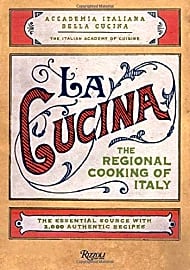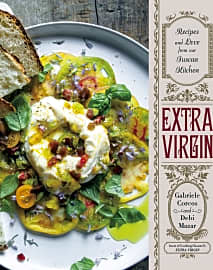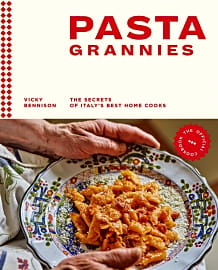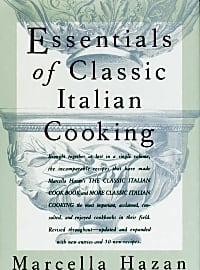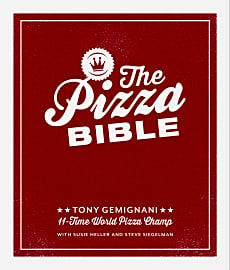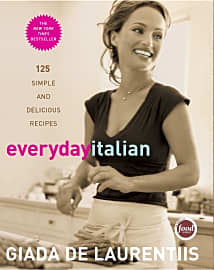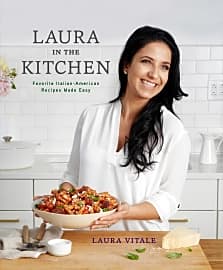The 10 Best Italian Cookbooks

This wiki has been updated 41 times since it was first published in September of 2015. So you finally got fed up with mac and cheese and you're looking to expand your culinary horizons. The easiest way to do so is to get tricks, tips, and recipes from some of the world's top chefs. From antipasti to pizza, gelato to sorbets, this selection of Italian cookbooks will have you whipping up new and exciting dishes that family and friends can enjoy in no time. When users buy our independently chosen editorial recommendations, we may earn commissions to help fund the Wiki.
Editor's Notes
March 23, 2020:
Unlike French and Indian food, which can be notoriously complex to master, Italian fare is more accessible to everyday cooks as long as they're willing to source fresh ingredients and use some elbow grease. That's not to say Italian food is one-note, however, and we wanted this list to showcase that. That's why you'll find everything from comprehensive primers written by award-winning chefs like Mastering Pasta and books filled with hearty, rustic dishes such as Extra Virgin to ultra-accessible guides like Laura in the Kitchen and Everyday Italian. We prioritized cookbooks with detailed explanations, authentic, well-tested recipes, information on how to use tools like digital scales and bench scrapers, photographs, and contextual information to bring recipes to life.
We can't overstate how important pasta is to Italians, and so we added another tome dedicated to noodles with Pasta Grannies. Complemented by an immensely popular Youtube channel of the same name, this warmly written book celebrates the nonne of Italy and conveys their expert advice on how to feed big families with lovingly-made comfort food. It came at the expense of Tasting Rome: Fresh Flavors and Forgotten Recipes, a selection that we still feel is relevant and interesting, but rather too niche and a tad artsy for the typical home cook looking to dive into Italian cuisine.
We also said goodbye to Now Eat This! in favor of La Cucina, an extremely comprehensive option with over 2,000 recipes gathered from Italians in every region. It explains how changing geography can impact how a dish comes together, boasts an impressive variety, and includes ancient peasant dishes that even the most inquisitive chef has likely never heard of.
The Italian Cookbook: A Must-Have for Every Kitchen
All you need is access to quality ingredients, free time, and a fine Italian cookbook or two.
Italian cooking tends to be simple, but not necessarily easy. Most experienced chefs will nod in knowing agreement at this statement, but for those just starting off their culinary adventure, think of it like this: most Italian dishes use fewer than ten ingredients, with many using five or fewer. But though the cooking process may be unencumbered by myriad foodstuffs, it will often involve precise timing, excessive hands-on preparation (slicing, dicing, kneading, e.g.), and often in fact allows less room for error/forgiveness precisely because of the small ingredient list. (When salt and pepper are the only spices in a recipe, for example, a bit too much or too little of either spice can ruin a whole meal.)
Fortunately, there are a number of Italian meals that are both simple and easy, and can be a pleasure even for the novice cook to prepare. Whereas some cuisines, such as French and Indian cooking, for example, are not only difficult to master but also tricky to commence, Italian cooking can be learned slowly and steadily, with a chef trying out ever more involved and difficult dishes as he learns about food and develops his prowess in the kitchen. All you need is access to quality ingredients, free time, and a fine Italian cookbook or two.
If you are a relatively inexperienced cook but you know you certainly love Italian food, it's wise to opt for a relatively general cookbook as your first choice. Pick a text focused on a wide array of meal types (dinners, salads, and breakfast options, e.g.) instead of on a book that takes a narrower focus. Even if you love Tuscan cooking and want to focus on appetizers in particular, say, or if your ultimate goal is making mouthwatering homemade pizza, take the time to get a better, broader grounding in Italian cooking before you zero in on a niche.
The better you understand how onions cook down in butter and/or oil, and how fennel plays off garlic, for example, the better you will be able to select the right herbs, seasoning, and other ingredients for that specialized dish down the line. Just as an art student starts off sketching the human form instead of commencing with abstract expressionist oil painting, so too should the chef start off with the basics of Italian cooking.
Once you have a grounding in Italian cuisine, a whole new raft of possibilities will be opened wide. You can spend years mastering pizza pie making, the crafting of delectable deserts, or you can master regional flavors from Sicily, Naples, and beyond. And fortunately, you will find a cookbook ready to help with all this and more.
Basic Ingredients to Stock for Italian Cooking
If you want to cook great Italian food, you're going to buy a great deal of onions, garlic, and other vegetables. You'll also buy a fair amount of meat, cheese, and fish. And whether the foodstuff in question is mozzarella or ham, basil or tomato, the fresher your foods, the tastier your meals are going to be. Plan on establishing your own garden and/or heading to the grocery store often. But while fresh foods are a must for most Italian cooking, there are a few items you can buy in bulk and always have on hand.
And finally, stock cans of varied tomato products, such as tomato paste, crushed tomatoes, and so forth.
Olive oil is a nutritious and delicious liquid that you will use for cooking various meats and veggies, for drizzling over salads and breads, and for blending into sauces of all sorts. If you are only going to have one oil on hand in your kitchen, it must be this one.
Your kitchen must always have plentiful pasta at the ready, ideally in several different forms. Consider at least stocking a few bags of a long noodle, like spaghetti, and a few bags or boxes of a shorter offering, such as rotini or farfalle. It's also advisable to get a box of arborio rice, which can be cooked slowly with myriad ingredients to make risotto or can be cooked quickly in a large pot of water to make an easy side dish to another meal.
A jar of pesto won't keep for long once open, but is shelf-stable for many months while still sealed. The same is true for many hard cheeses when kept in the refrigerator; Parmesan and Pecorino Romano cheese both keep for weeks in the fridge or for months when frozen. Your freezer should be loaded with a few cutlets of chicken and a good deal of ground beef, and perhaps even some pork and fish.
Salt, pepper, and garlic powder are all must-have spices, though fresh garlic is ideal when possible. And finally, stock cans of varied tomato products, such as tomato paste, crushed tomatoes, and so forth. These can be used to make sauces and/or added to various dishes, approximating a fresh taste any time.
A Brief History of Italian Cuisine
If there are two basic foodstuffs that are associated with Italian food above all others, they are undoubtedly pasta and the tomato. Ironically, neither of these foods are native to the Italian peninsula. In fact, the latter was not even known to Europeans before the last years of the 15th century, and was not imported to Europe for cultivation until the 16th century.
In antiquity, Italians ate meals with rice as a staple grain, and bread and cheese were also popular.
Traditional pasta is made from durum wheat, which is native to the Middle East and parts of Eastern and Central Europe. The wheat is ground into semolina -- a rough variation of flour -- which can then be used to make an unleavened dough used in creating various types of pasta. The first known consumption of Italian pasta dates to the middle of the 12th century, and by the 14th century it was fast becoming a staple food across the many city-states of Italy.
As for tomatoes, those were not seen in Italy until the year 1548, though Spaniards had already been raising the fruit for several decades. Tomatoes, native to South and Central America, flourished in the Mediterranean climate of Italy, and soon were not only being harvested in great numbers, but were also being cross-bred into new and ever more flavorful varieties.
In antiquity, Italians ate meals with rice as a staple grain, and bread and cheese were also popular. Many types of meats were commonly consumed as well, with chicken and various fish found in early and Medieval recipes. Artichokes, grapes, and olives (and of course olive oil) were also ubiquitous.
Italian cuisine approximating that which is still enjoyed today was developed steadily during the course of the 1700s and 1800s, greatly aided by the widespread cultivation of New World foods including the tomato, the bell pepper, and certain beans. Italian cooking has always stressed the importance of high-quality ingredients -- fresh when possible -- over the heavy use of spices and complex cooking techniques. Thus the elegant simplicity of many celebrated dishes, such as sausage and peppers or the classic spaghetti and meatballs, both of which are well-known today and were very much in fashion with bygone generations.



